Tag: Bordeaux
Sampling Wine Across Europe
We’ve visited a lot of wine regions over the past 20 years or so, but as our interest in viticulture and winemaking has grown, we’ve begun looking at vineyards and wineries with new eyes. That was especially the case on our most recent vacation, where we visited Venice, London, and Bordeaux. Especially Bordeaux. But I’ll get to that later.
While we enjoyed the winery visits we made in years past, it was a different kind of enjoyment from today. Then, we would taste wine in
Sonoma or Napa or some other wine valley, and buy a bottle or two to take home. Sometimes we might hire a limo or go in a van or micro bus tour with other couples, and those were great times that I wouldn’t trade away for anything.
Today, though, we are as interested in what goes on behind the scenes – in the vineyard and in the cellar – as we are in tasting the wine. Actually, they’ve become related pursuits. When we visit wineries, ideally we’d like to look at the vines and talk to vineyard managers about the soil, the climate and all of the other things that make their wine special. We want to see the cellar and the barrel rooms (although I sometimes feel that when you’ve seen one barrel room, you’ve seen them all), and we want to talk to the winemaker about the vintages we’re going to taste, the challenges that they faced in each of those years, and the approach they take to making the wine. And then, of course, we want to taste, but only after we know something about the vines and cellar practices.
That’s the ideal; the reality usually falls a bit short. Actually, it usually falls a lot short. Most tasting rooms in the United States are staffed by novices with limited knowledge of the wines they’re pouring, and it’s rare to find a winery where we can see the vineyard and talk to someone who knows anything at all about the vines. Of course, there have been days when we’ve been able to realize that ideal. And a week ago, in Bordeaux, we hit the mother lode.
First things first, though. We had decided to start our trip in Venice, where we thought we’d relax and adjust to European time in a leisurely way. And truthfully, we just love Italy in general and Venice in particular. This trip, we decided to go for a change in scenery by staying in Murano, a small island that is perhaps a 20 minute vaporetto (water bus) ride from Venice.
On our second day, we ventured over to Burano, an island known for lace and, for us, the scene of some of the most memorable meals of our lives. As it happens, Burano is connected by a bridge to another small island – Mazzorbo – and on Mazzorbo, there is a small restaurant and inn with a vineyard. The vineyard is just over two hectares in size, and it is entirely surrounded by medieval walls that were rebuilt in 1727. According to the web site, the vines are mostly ungrafted, which means they are growing on their own roots, rather than on an American rootstock that is immune from phylloxera, the aphid-like insect that nearly destroyed the European wine industry in the 19th century.
Old as the walls are, the vineyard itself was planted just three years ago, the same year that we planted our own small hobby vineyard. So, of course we were interested in comparing notes with the vineyard manager. Alas, this is one of those times where our expectation fell short of reality. We had the opportunity to wander through the vineyard, but unfortunately, the restaurant and tasting room were closed for an event, and most of the folks we hoped to talk to were missing. Well, maybe next time.
But it’s pretty hard to be unhappy in Italy. We had a number of great meals and some lovely wine. And there’s something special about walking around under the Italian sun.
London didn’t afford us any opportunities to visit wineries, but between the British museum, the British Library, Kensington Palace and the wonderful London theater, we had some good meals and good wine. And we did enjoy several wine bars. One was the “Green Man and French Horn,” a bar that specializes (exclusively) in wines from the Loire Valley. I found that surprising. I suspect most people don’t know Loire Valley wines very well, if at all, and I didn’t know much about most of the wines on the list. But there were some familiar wines, especially the Chinon, which are based on Cabernet Franc, and the Viognier. Both grapes, by the way, do exceptionally well in Virginia, and we have both growing in our own vineyard.
Our favorite wine bar, though, was “The Ten Cases,” which serves a dozen or so different wines, but orders just ten cases of each. Once those ten cases are finished, the wine is gone from this bar forever, and ten cases of a different wine are ordered in its place. We loved the food, and loved the wine. If we lived in London’s Convent Garden area, where it’s located, I suspect we would dine there on the order of once a week.
After London, we moved on to Bordeaux, which was something quite special. Our apartment looked out over the ancient city gate, the Porte de Bourgogne, and the Garonne River. Inside, there was a small wine rack on the wall with four bottles of Bordeaux. The information folder explained that some guests arrive too late to be able to purchase wine; in those cases, they should open the bottle of their choice and replace it with another. The bottles weren’t terribly exciting – Bordeaux Superieur, for example – but I’m sure they were fine. As it happened, we didn’t arrive too late to purchase wine of our own, and I opted for an inexpensive St. Emilion to keep handy for a late afternoon- early evening glass on our terrace. I think I might have paid a grand total of 9 Euros for it, and it was delicious.
On our first day, still tired from waking at 3:30 a.m. in London to get to Gatwick for an early flight, we wandered through the town center, and sat down at a small café for some wine and cheese. I believe the wine was a Pauillac, and it set the pattern: we didn’t have one bad glass of wine the entire visit.
But it’s one thing to enjoy a bottle of wine at a restaurant, wine bar or tasting room, and quite another to get outside the city and tour the great wine estates. We did both, and I’ll focus on the estates we visited in my next post.

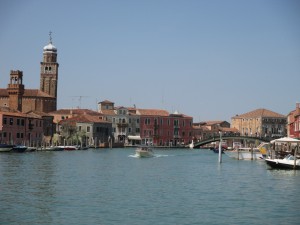
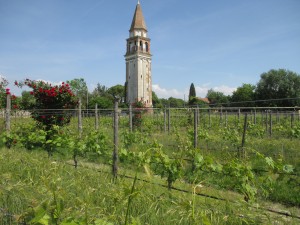
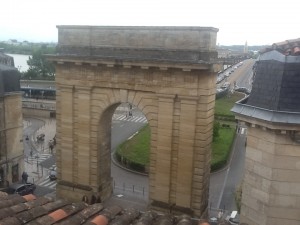

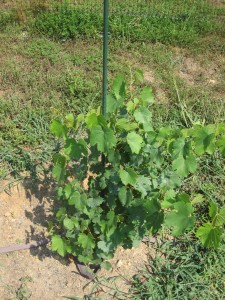
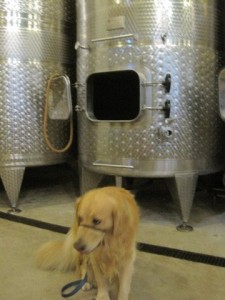


Recent Comments